Learn How to Grow Carob Tree for its chocolate substitute edible pods or as an ornamental plant! Here are all the details!
Growing Carob Tree is easy in warm climates as it is native to the Mediterranean regions and belongs to the legume family. It’s promoted as a chocolate substitute, although the taste is much sweeter with a hint of chocolate. Let’s have a look at Learn How to Grow Carob Tree!
Fun Fact: Carob pods contain about 8% protein, vitamins A and B, and about one-third of calories than chocolate.
USDA Zones — 8b-11
Propagation Method — Seeds, Grafting
Difficulty — Easy
Soil pH — 6 – 8
Other Names — Ceratonia Siliqua, St. John’s Bread, Carob, Locust Bean, Locust Tree, خَرُّوبٌ, חרוב, Carob Bush
Learn How to Grow Dischidia Ovata here
Carob Tree Information
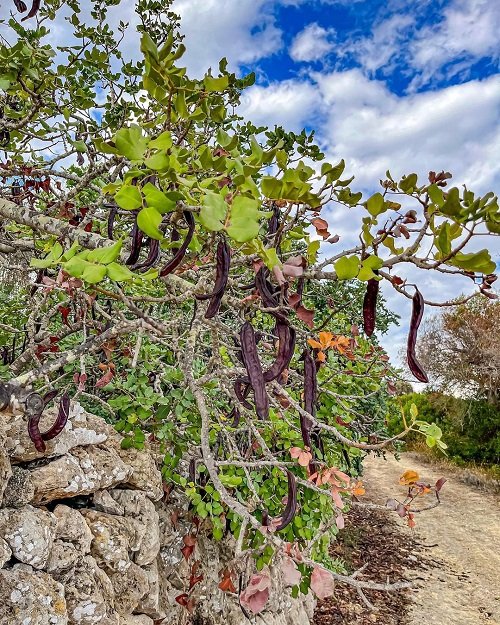
Carob Tree grows about 10-30 feet tall. It is a dioecious tree, which means each tree bears male or female flowers. Carob trees can tolerate temperatures down to 20 F (-7 C) easily.
It has a thick and twisted trunk with rough and brown bark. The leaves are oval, dark green, and shiny and 12 to 30 centimeters long. The foliage provides welcome shade in hot countries. They form a very effective curtain against noise too.
Here are Super Effective Lawn Care Tips for Lush Green Garden
Growing Carob Tree from Seeds
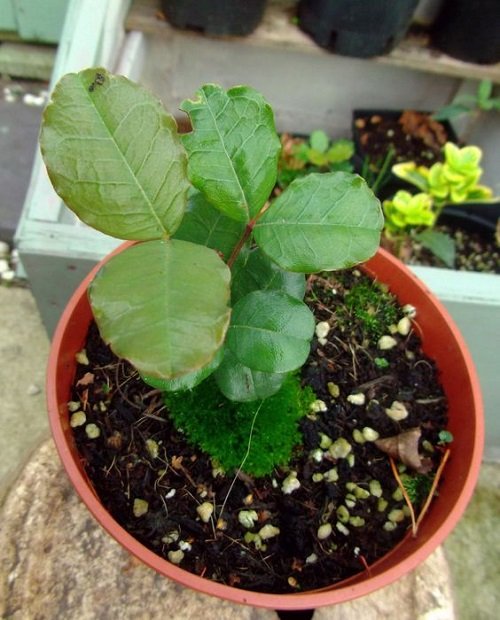
The fresh carob tree seeds germinate quickly and easily. If you don’t find fresh seeds, you can also grow the tree from dry seeds after soaking them in water overnight.
Sow the seeds in a well-draining potting mix, water well, and keep it at a location where it gets plenty of bright light.
Pro Tip: Buy a sapling from a nursery to save time and effort.
Check out these Fruits You Can Grow from Seeds and Leftovers from Kitchen
Requirements for Growing Carob Tree
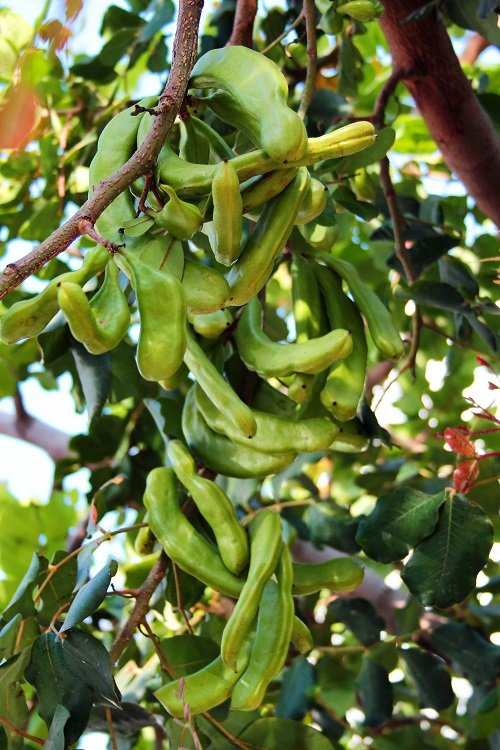
Sunlight
Carob tree needs full sun and a location that is sheltered from the wind. If growing in a hot climate, it’ll not mind growing in a position that receives partial sun. For the best pods, ensure it gets a minimum of 3-4 hours of direct sunlight every day.
Soil
The carob tree grows in difficult positions and poor soil including sloppy hillsides with deep sandy soil or loam, even arid. It does not tolerate acidic or wet soils and requires adequate drainage.
Watering
It is resistant to drought and grows well in a lack of water. However, watering must be provided during dry seasons, especially if the tree is grown for its fruit.
Here are Signs of Overwatering & How to Save an Overwatered Plant
Carob Tree Care
Carob tree care is easy! The tree is ideally grown in regions with Mediterranean and Middle Eastern frost-free warm climates. It’s cold tolerant as well–a fully developed carob tree can withstand temperatures down to 20 F (-7 C), but frost during the flowering period can reduce or sometimes prevent fruiting.
Fertilizer
Fertilizer is often unnecessary for carob trees. Side-dressing the plant with well-rotted manure, twice a year is sufficient. Additionally, a dose of 8-3-9 ratio fertilizer can be applied occasionally to give the plant a boost.
Learn Benefits of Bone Meal Fertilizer here
Pruning
It’s a wild tree, which means you can leave it without pruning. However, pruning a carob tree when it is young helps it attain the desired shape you want.
The tree must be pruned regularly so that air and light can penetrate. Young stems can be removed without affecting the production of carob. Also remove the tangled, weak, and damaged or diseased branches from time to time.
Pests and Diseases
There are only a few pests and diseases that disturb this tough tree. Be aware of squirrels, scale insects, and carob moths. In diseases, it gets killed due to root rot because of overwatering.
Here are DIY Insecticidal Soap Recipes for the Garden to Kill Pests
Harvesting Carob Tree
After flowering in the fall and winter, the carob tree develops edible seed pods in the spring. You can pick the pods when they are green and soft and about 4-5 inches long.
Wait for the summer to pick ripe, dark-brown pods that are looking big and healthy.

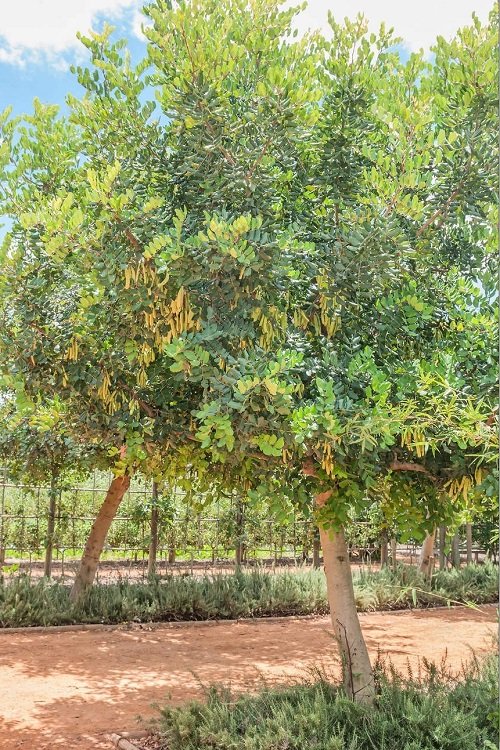
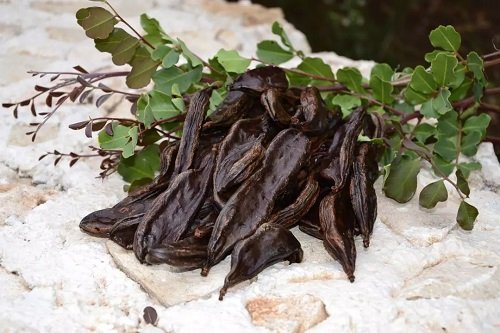

I have grown a carob from seed. The leaves have dark spots. It doesn’t look very happy.
How close to a huge Carib tree can I grow a peacock palm?
If carob trees are female male how do you tell and do you need a couple not 9ne tree?